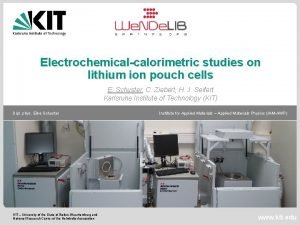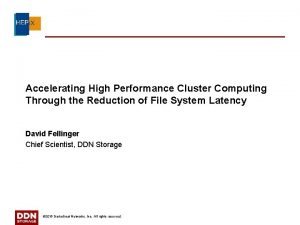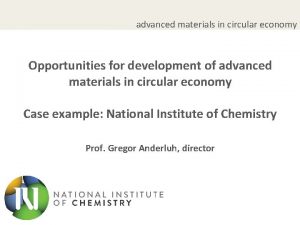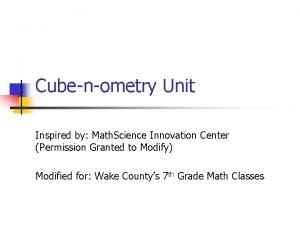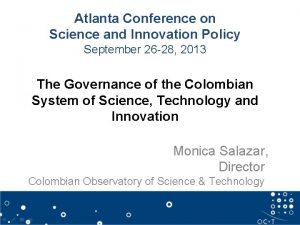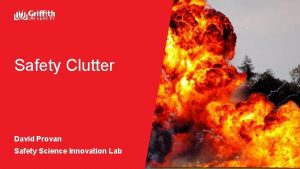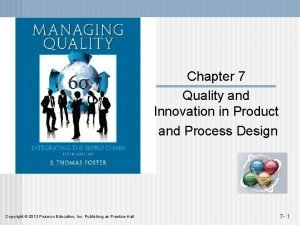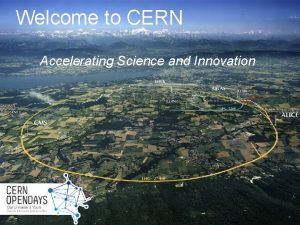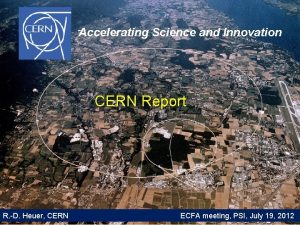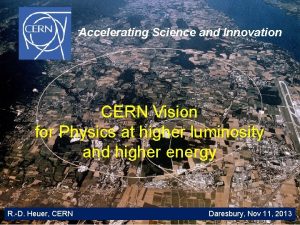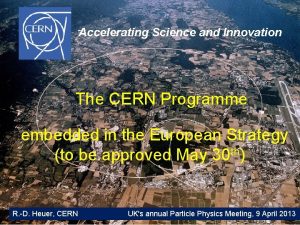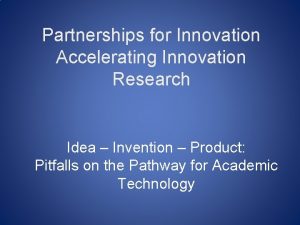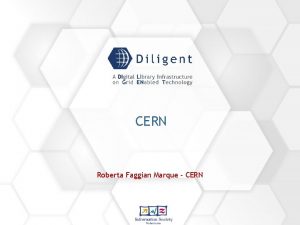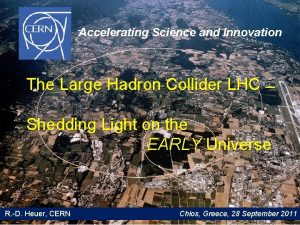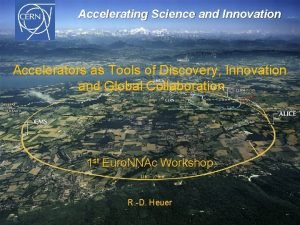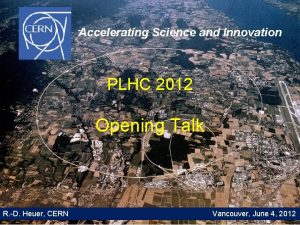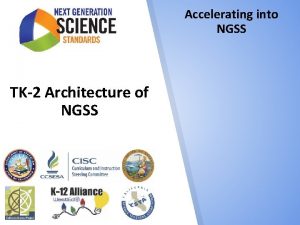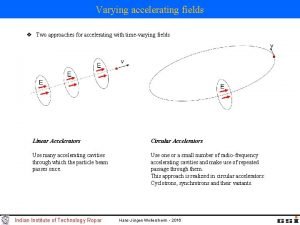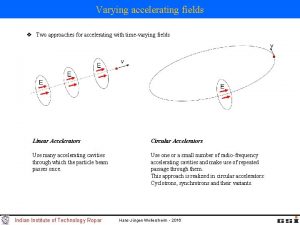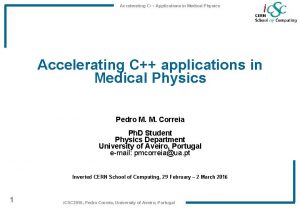Welcome to CERN accelerating Science and Innovation Welcome



















- Slides: 19

Welcome to CERN: accelerating Science and Innovation

Welcome to CERN: accelerating Science and Innovation Mr. Dean Nelson Sun Microsystems U. S. A. Research & Discovery Training Technology Collaborating

CERN stands for over 50 years of… • • fundamental research and discoveries technological innovation training and education bringing the world together 1954 Rebuilding Europe First meeting of the CERN Council 1980 East meets West Visit of a delegation from Beijing Frédéric Hemmer - CERN 2008 Global Collaboration The Large Hadron Collider involves over 100 countries

CERN in Numbers • 2328 staff* • 711 Fellows and Associates* • 9535 users* • Budget (2009) 887 MCHF (595 M€) *6 January 2009 • Member States: Austria, Belgium, Bulgaria, the Czech Republic, Denmark, Finland, France, Germany, Greece, Hungary, Italy, Netherlands, Norway, Poland, Portugal, Slovakia, Spain, Sweden, Switzerland the United Kingdom. • Observers to Council: India, Israel, Japan, the Russian Federation, the United States of America, Turkey, the European Commission 4 and Unesco

5

CERN’s Tools • The world’s most powerful accelerator: LHC – – A 27 km long tunnel filled with high-tech instruments Equipped with thousands of superconducting magnets Accelerates particles to energies never obtained before Produces particle collisions creating microscopic “big bangs” • Very large sophisticated detectors – Four experiments each the size of a cathedral – Hundred million measurement channels each – Data acquisition systems treating Petabytes per second • Top level computing to distribute and analyse the data – A Computing Grid linking ~200 computer centres around the globe – Sufficient computing power and storage to handle 15 Petabytes per year, making them available to thousands of physicists for analysis Frédéric Hemmer - CERN

The Large Hadron Collider (LHC) tunnel

The “ATLAS” experiment 7000 tons, 150 million sensors, 1 petabyte/s Wolfgang von Rüden, CERN

A Grid with over 200 computer centres

T 2 T 2 T 2 s and T 1 s are inter-connected by the general purpose research networks T 2 • T 2 Grid. Ka Any Tier-2 may IN 2 P 3 access data at TRIUMF Dedicated LHC will produce 10 -15 million Gigabytes of anyexperiments Tier-1 10 Gbit links Brookhaven data each year (about 20 million CDs!) • T 2 ASCC LHC data analysis requires a computing power equivalent T 2 to ~100, 000 of today's fastest PC processors. Nordic Fermilab T 2 CNAF SARA NIKHEF T 2 RAL PIC T 2 T 2

250 sites 48 countries 50, 000 CPUs 13 Peta. Bytes >5000 users >200 VOs >140, 000 jobs/day Archeology Astronomy Astrophysics Civil Protection Comp. Chemistry Earth Sciences Finance Fusion Geophysics High Energy Physics Life Sciences Multimedia Material Sciences … 32% RISGE - OGF 22 1111

CERN – a unique organisation Wolfgang von Rüden, CERN

The fastest racetrack on the planet… Trillions of protons will race around the 27 km ring in opposite directions over 11, 000 times a second, travelling at 99. 99991 per cent the speed of light. Frédéric Hemmer - CERN

The emptiest space in the solar system… To accelerate protons to almost the speed of light requires a vacuum as empty as interplanetary space. There is 10 times more atmosphere on the moon than there will be in the LHC. Frédéric Hemmer - CERN

One of the coldest places in the universe… With an operating temperature of about -271 degrees Celsius, just 1. 9 degrees above absolute zero, the LHC is colder than outer space. Frédéric Hemmer - CERN

The hottest spots in the galaxy… When two beams of protons collide, they will generate temperatures 1000 million times hotter than the heart of the sun, but in a minuscule space. Frédéric Hemmer - CERN

The biggest most sophisticated detectors ever built… ALICE To sample and record the debris from up to 600 million proton collisions per second, scientists are building gargantuan devices that measure particles with micron precision. Frédéric Hemmer - CERN

One of the most extensive computer system in the world… To analyse the data, tens of thousands of computers around the world are being harnessed in the Grid. The laboratory that gave the world the web, is now taking distributed computing a big step further. Frédéric Hemmer - CERN

The Mecca of the Particle Physics community … … bringing the world together Frédéric Hemmer - CERN
 Innovation for the sake of innovation
Innovation for the sake of innovation Disruptive and radical innovation
Disruptive and radical innovation Accelerating rate calorimeter
Accelerating rate calorimeter Law of accelerating returns
Law of accelerating returns Effect of accelerating voltage on sem resolution
Effect of accelerating voltage on sem resolution Accelerated implementation methodology
Accelerated implementation methodology Accelerating high performance
Accelerating high performance Advanced materials
Advanced materials My favorite subject is math and english
My favorite subject is math and english Math and science innovation center
Math and science innovation center Atlanta conference on science and innovation policy
Atlanta conference on science and innovation policy Safety science innovation lab
Safety science innovation lab 영국 beis
영국 beis Welcome welcome this is our christmas story
Welcome welcome this is our christmas story Anthropology vs sociology
Anthropology vs sociology Wwwk-6.thinkcentral
Wwwk-6.thinkcentral Hard science and soft science
Hard science and soft science Quality and innovation in product and process design
Quality and innovation in product and process design Social science vs natural science
Social science vs natural science Different branches of science
Different branches of science


